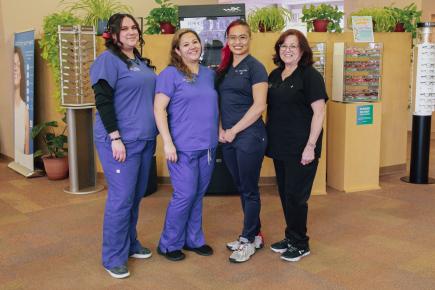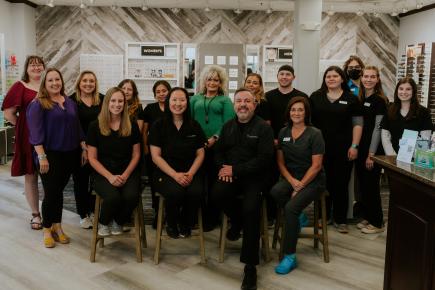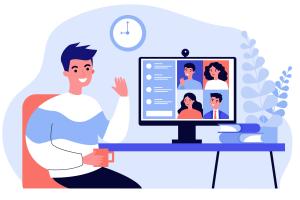
There is a lot involved in owning and growing a practice, so sharing ideas and best practices can help lighten the load. There is a lot to be learned from other likeminded eye care professionals—and even those outside of optometry. 2023 Best Practices Honorees Tracy Ho, OD, of City of Vision Eye Care in Rio Rancho, N.M., and David Holler, OD, of Clarity Vision of Apex in Apex, N.C., discuss some of the greatest benefits of building connections with other practices, locally and beyond.
Where some would see them as competitors, why do you find it beneficial to network with other optometrists within your community?
Dr. Holler: There’s an expression, “When the tide goes up, all of the boats go up.” I believe there’s a lot of truth to that concept. When eye care practices are open and willing to pool their resources and share ideas, we all benefit in the end.
Dr. Ho: What’s unique about our community here in New Mexico is that there is an overabundance of patients. The demand for eye care is so high that it’s sometimes a struggle to see patients as quickly as they’d like—or need. For example, if I don’t have availability until a couple of months out but another practice has availability before I do, I’ll refer the patient to where they can get the help they need as quickly as possible. At the end of the day, it’s about doing what’s best for the patient.
Do you network with any ophthalmologists?
Dr. Holler: About once a year, our practice hosts a meeting where we bring in eight to 10 ophthalmologists who conduct CE on topics that we request. It’s an excellent opportunity not only for ophthalmologists to share their knowledge with us, but to foster reciprocal referrals in the process. It’s a win-win for all.
Dr. Ho: There’s one local ophthalmologist with whom we’ve forged a particularly strong relationship, which has been mutually beneficial for patient referrals. We “shopped around,” so to speak, until we found an ophthalmologist whose vision and patient care philosophy best aligned with our own.
Do you network with any other health care providers in the area who work outside of eye care? If so, who?
Dr. Ho: I’ve developed a relationship with a local dentist whose office is only a few doors down from ours. Through our communication, I’ve learned how many parallels there are between dentistry and optometry, and it’s been interesting to hear his perspective on similar topics and trends. It’s refreshing to hear from other professionals in similar fields who endure similar challenges and learn how they’ve handled or overcome them.
In your experience, what have been some of the biggest benefits of networking with other eye care professionals?
Dr. Ho: I’m a major proponent in not re-inventing the wheel, so leveraging ideas from other practices and doctors has played a major role in our practice’s own success.
Dr. Holler: Echoing Dr. Ho, I think the biggest and most obvious benefit is having the ability to learn from others and make improvements within my own practice. There’s a lot that can be learned from other likeminded professionals, whether it is implementing new technologies, finding better treatments, motivating my team, or simply improving practice efficiency.

What has been the biggest takeaway that you’ve gleaned from other eye care professionals and leveraged in your own practice?
Dr. Holler: What I’ve learned through networking with other optometrists—both near and far—is that sometimes relying solely on your community can be limiting. One of the things I took away from one of these encounters is the benefits of virtual staff members. We now leverage virtual scribes in our practice and recently started outsourcing some of our back-end tasks, such as billing.
Dr. Ho: There’s a practice in our community that’s been around for a long time and it’s very different than ours. I’ve learned from that practice’s strengths to play to our weaknesses—or areas for improvement, rather. I’ve also learned from this practice how important internal communication is. Because of them, we started doing five- to 10-minute team huddles once per week to get everyone on the same page and what to expect for the week to come.
For other ECPs interested in broadening their networks, where would you recommend they begin?
Dr. Holler: Start by casting a wide net and get connected with ODs on Facebook. But also look to get involved in local and regional groups or meetings. I’d also lean on sales representatives to learn about other likeminded practices in the area to make that connection.
Dr. Ho: The Professional Eyecare Resource Co-operative (PERC), the Professional Eyecare Associates of America (PECAA), Vision Source, and IDOC are some of the top groups I would recommend joining. A practice has to find the best fit, so I recommend joining as many as possible to test the waters.








